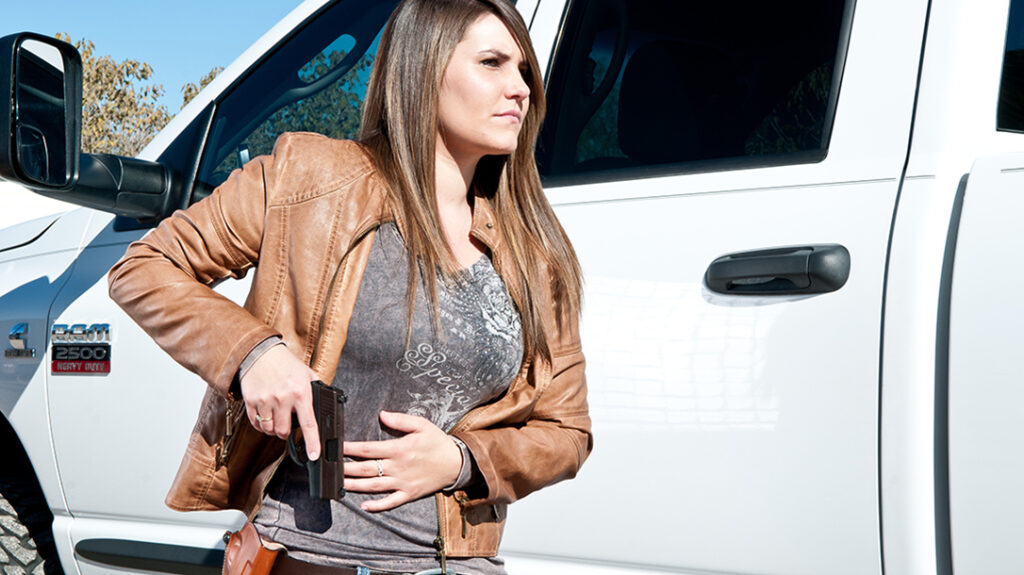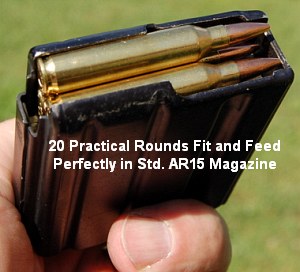There are several steps to mastering firearms. You first learn how to use the gun. This is followed by the ability to consistently hit your target. Next, you need to be able to quickly draw your gun or get your rifle into action. These are the essential building blocks for combat shooting and tactics.
RELATED STORY
Here are some tips to help family members learn responsible gun carrying
The Essentials of Combat Shooting & Tactics
This is when people who have been trained with firearms for defensive purposes should make the leap to gunfighting. This is a significant step, as the vast majority of it is in your mind. It is important to learn how violent encounters work and tactics. It is important that you are able to move and shoot.
Gunfighters are distinguished by their ability to move and shoot accurately. There are many benefits to this skill, but there are some key points.
OODA Loop
The first is that moving may disorient your attacker. For this we need to get an understanding of the “observe-orient-decide-act” (OODA) loop. This concept was created by Air Force Col. John Boyd (a legendary military strategist). OODA simplifies the decision-making process.
Boyd explained that if a shooter is able to process this cycle quickly, observing and reacting more quickly than an opponent, they can “get inside” their opponent’s decision cycle and gain an advantage. This is not a one-time, but a fluid decision.
All decisions are based upon observations of the changing situation, tempered by implicit filtering of what is being solved. To make a decision, you must process the information. The OODA loop concept is far more complex than what we can cover in this article. Its genius deserves deep study. We will not go into detail because it is too time-consuming.
Broken down the OODA Loop
You first observe what is happening. This information will help you make your next decisions. This is a crucial reminder to be aware of your surroundings. You should scan your surroundings and look for secondary exits.
The orientation is the second stage of the process. The OODA loop, as mentioned above, is a complex and deep creature. This part of the cycle demonstrates this. Boyd says there is a filtering of information through culture, genetics and past experience.
This means that your training and experiences will be key to establishing your orientation. If you were a pacifist, but you didn’t believe evil could happen, your orientation might be different from someone who is trained to fight violence.
Frans P.B., John Boyd scholar Osinga says: “Orientation shapes how we interact with the environment. . . It shapes how we see, decide, and act. In this sense, orientation determines the character of the present OODA loops and the future loop.
We must now make a decision. This is where preparation and a prepared mind are crucial. Now you must choose from the many options presented in the orientation phase. This phase can be described as “Not what?”
It’s time to put it into action
The final phase is to act. Boyd calls this section “test”, because you will be testing your responses. If your answer is correct, you win this battle. If your answer is incorrect, you can start the OODA loop over again using your newly observed data. This cycle is a fundamental truth of life and something we should learn.
Daily Use
The OODA loop is used in every day life, whether you are driving on the freeway or in combat. You should use the OODA loop when moving and shooting at a faster pace than your opponent. This allows you to “inside” your opponent’s OODA loop, causing confusion and disorder. Opponents will need to reorient their focus on the target, which they once believed would be easy prey.
Moving and shooting should not be limited to left/right, front/back movements. For millennia, the idea of “stepping off” has been a martial concept. It is common to step off at a 45 degree angle in many cases. This is especially useful when the assailant is close by and closing on you. You must move off the line like a matador as the bull rushes past. Sometimes, it may be appropriate to step off the line and go to a knee.
The assailant will drive all of these choices. They are attempting to win by attacking you. Their OODA loop has taught them that they will conquer you if they do XYZ. Your movement will cause them to lose control of their mental apple cart and force them into a response. Another benefit to mastering shooting on the move? It makes you a difficult target.
In The Fight
Johnny McCrackhead is unlikely to have had any serious firearms training. His ballistic skills will be limited to shooting at static objects, usually from a static position. He will be terrible at shooting. This is not a good thing. A trained marksman can shoot you from two feet away. This is what happens night after night in violent places like Chicago and Detroit. However, it does give us a skill-based edge that we need to leverage.
Accessing your Weapon while on the Move
The fastest and most effective technique to get into a fight is to draw your weapon while you are moving. This is the combination or two motions. However, both can be done simultaneously. This drill is best done about three yards from the target.
When you hear the “go” command, index the pistol while you are stepping back with the strong-side foot at 45° from the target. When your foot is stable and your foot has planted, your gun should be in your holster. The gun should be parallel to the ground and the muzzle of the target. This is close-quarters shooting position where the gun is at your hip and your shooting hand is responsible for managing it.
You are capable of hitting the target in this position if necessary. Although accuracy will be affected, it will allow you to move more freely and gain more distance. Slide back another step to finish your pistol presentation. While you’re doing this, fire a few rounds into the target’s center mass.
This drill can be used on both the right and left sides. You can modify the drill to allow you to step directly to the right, left, backward, and forward. There may be times when you need to close the distance with an attacker.
Pay attention to Footwork
Many have debated how to step while shooting. Some recommend that you do a heel/toe step, while others suggest that you squat and do the “Groucho” walking. These can be simplified, according to my experience. Move like a book on your head. This will help you to naturally adapt and allow your hips to drop and allow your feet to glide.
Another thing I want to mention is the perception that your front view will be moving a lot. It will move more than if it were stationary, but don’t panic. Your sights will still be at the center-mass of your target if you walk smoothly. While you won’t be shooting a dime-sized target group, you will still be shooting rounds at the center-mass.
This drill is great for getting about 15 yards away from your target. Start to glide towards the target by presenting your weapon. Once you feel ready, fire shots until you are approximately three yards away. You can now take a new magazine and move backwards. To avoid getting on something or taking a tumble, make sure you don’t slip your feet.
You can also do it from left to right, then from right to left. Crossing your feet while you move is something I discourage. It is easy to get tangled up in your own movements and end up on the floor.
Take a knee
The last drill I will discuss is stepping back and then getting down on one knee. This is useful when you have a deadly threat in front, but it is unsafe to fire. It doesn’t matter if it’s innocent people or not, you must embrace the safety principle “Know your target–foreground & background”. This one will use the 45 degree step for simplicity.
As you step back at 45 degrees, index your weapon. Now your pistol is ready. You will now move to the knee by lowering your strong-side leg. As this happens, you are completing our presentation. Now you can shoot upwards at an angle to engage the target, without putting any innocents in danger.
Gunfighters should practice and learn how to shoot and move. If someone shoots at you, your instinct will be to move. Being able to do this effectively can help you win.
This article was originally published by Personal Defense World in the Aug/Sept 2021 issue. Subscription is available in print and digital editions at OutdoorGroupStore.com. Or call 1-800-284-5668, or email [email protected].

















